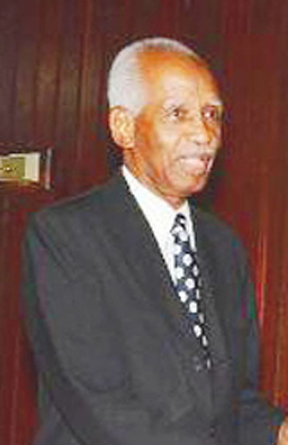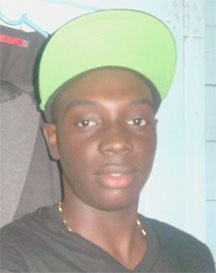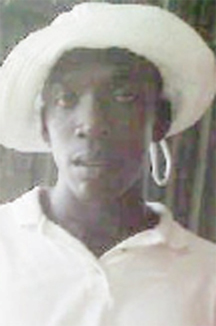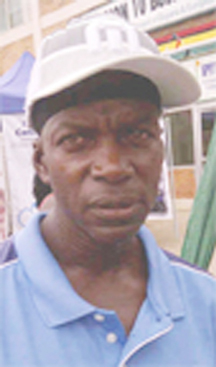The inquiry into the fatal shooting of three Linden protestors last July has found the police responsible for the deaths but said that in the circumstances, the discharge of ammunition was justified as the police were confronted by a hostile crowd and had no clear intention to kill or injure anyone.
“We believe that the police were responsible for the shooting to death of the three persons as well as the injuries caused to several other persons at Linden on July 18, 2012, as there is no evidence that anyone else had a firearm which was discharged,” was the verdict of the Commission of Inquiry (COI), in a report presented to President Donald Ramotar on Thursday.

This was the crux of the matter before the Lensley Wolfe Commission of Inquiry as the residents of Linden had asserted that Ron Somerset, Shemroy Bouyea and Allan Lewis had been killed by police during a July 18, 2012 protest sparked by a government plan to raise electricity tariffs. The police in the days that followed the shooting had denied responsibility for the shooting.
The commission did not conclusively identify any specific rank as having fired the fatal shots but singled out the action of one officer in its conclusions. “It seems to us that ASP [Patrick] Todd was somewhat reckless when he discharged four rounds of ammunition in the direction of the Mackenzie-Wismar Bridge when there were hundreds of person on the Bridge and in the vicinity thereof,” the report said.
“Nonetheless the discharge of ammunition itself by the police in the circumstances described by ASP Todd was justified having regard to the fact that the police were confronted by a very hostile crowd and there was no clear intention on the part of the police to kill or cause injury to anyone. The apparent intention was to scare the protestors into removing from the Bridge,” it said.
“The shooting of Buckshot #00 pellets at persons in the crowd however is another matter and not surprisingly was not owned by anyone. The use of such lethal force was not justified in the circumstances,” the report added.
A number of protesters were injured by pellets and the Commission has recommended compensation for the relatives of those killed, several of those injured and some whose property was lost or damaged but noted that any payment of the compensation recommended would be a favour rather than from legal obligation.
The report of the commissioners, compiled following six weeks of testimony, also exonerated Minister of Home Affairs Clement Rohee on the issuing of any instructions to the police during the events of July 18th.
This is one of the questions that stakeholders in Linden and members of the opposition had wanted clarified during the inquiry.
In terms of determining who was responsible for the fires and destruction that followed the killing of the three protesters, the report said: “It seems clear that the violence and destruction after the July 18th shootings were occasioned by the protestors who were aggrieved by what they concluded was the police actions in shooting at the protestors.”
The COI was set up to inquire into and report on the circumstances surrounding the shooting to death of Lewis, Somerset and Bouyea and the injuries of several other persons at the Mackenzie – Wismar Bridge.
While concluding that the police were responsible, in the body of the report, the Commission said that after considering the testimony of the witnesses it is clear that there is absolutely no direct evidence from which one could unreservedly conclude that the three deceased were shot to death by the police detachment on the bridge. “At the same time, however, there is no direct evidence that anyone other than the police was armed with firearms on the bridge on the day of the 18th July, 2012,” it said.
Buckshot #00
The autopsies had revealed that all three died from injuries due to gunshot wounds. The Commission noted that the metal fragments recovered from the bodies of Somerset, Lewis and Bouyea at the time of the post-mortem were identified by the ballistic expert as lead pellets, buckshot #00. However the evidence from the police, who issued the arms to police officers who were deployed for the bridge on July 18, is that no such ammunition was issued to anyone, the report said adding that the evidence is that buckshot #00 has not been used by the police for some time between seven and ten years.
“Against the background of the evidence the following questions could be raised. Were the three persons shot and killed by the same person? Or two or three persons who unlawfully had that type of ammunition with them?” the report queried.

The report said that examination of the Arms Book in which the type of weapon and ammunition assigned to persons are entered does not disclose any such ammunition being issued. “However the Commission is of the view that the entries in the book cannot be relied on as there were numerous irregularities evident therein,” it noted.
In terms of the shooting, the commission pointed out that an examination of the relevant evidence reveals that ASP Todd and Constable Rodney were the only police ranks who discharged shots from shotguns. The report recalled that Dr Nehaul Singh, the pathologist, testified that, on conducting the post-mortem examinations, he handed over the shells he recovered from the bodies of the three deceased to Inspector Leroy Alexander who, in turn, sent them to Sgt. Eon Jackson to be analysed.
Sgt. Jackson testified that he received three envelopes, in each of which was a container with 00 buckshot cartridges with copper-coating. “In his 17-year experience, he was aware that this type of cartridge was not used by the Police. He had, however, overheard his superior, Mr. Azore, mentioned to Dr. [Mark] Robinson that in the year 2005 the Police ceased the use of 00 buckshot cartridges. SS [Linden] Alves testified that he was a member of the TSU for over twenty years and during that time the Unit did not use 12-gauge 00 buckshot pellets in relation to crowd control,” the report said.
It noted that Dr. Robinson mentioned that the police provided him with three rounds of ammunition, two of which are in current use and the third had not been used since 2005. “These were numbers 4, 6 and 00 cartridges. According to him, numbers four and six were bird pellets – small pellets, and the `00’ was different to the ones which were found in the bodies of the deceased, in that while they were all buckshots, the exhibits recovered from the deceased were pellets which had a light coating of copper, whereas the ones he received from the police were simply lead,” the report noted.

“This begs the question: if ‘00’ buckshot cartridges were not being used by the Police since 2005, or for over 20 years, how is it that the Police were able to provide a sample of the 00 cartridge to Dr. Robinson? Does this not show that the Police still have ‘00’ in stock?’ the report asked. “The `00’ sample which was provided did not have copper-coating. The pellets which were extracted from the deceased’s body had a light coating of copper. The question arises whether the sample produced to Dr. Robinson represented merely a sample of a `00’ cartridge in general or rather a sample of the specific kind of `00’ cartridge which the Police had in their stock. Is it that the Police had a mixture of `00’ cartridges which included `00’ cartridges with a light coating of copper such as which killed the deceased?” it further asked.
No evidence
The commission noted that ASP Todd discharged a shot from a shotgun and fired to the ground to take off the velocity. He was the only person who discharged a pump-action shotgun from the Unit, using No.6 cartridge. “There is no evidence on the record, direct or circumstantial, which conclusively points to the fact that the three deceased were shot by members of the Unit. Neither is there any evidence that the deaths were caused by injuries received from police issued cartridges, numbers 4 and 6,” the report said.
Todd had fired more than one shot. The commission noted that ASP Todd said he heard four loud explosions from the direction of the Linmine area which sounded like gunshots. “He fired three shots from Sgt. Junior’s shotgun to scare protesters who were about 200 metres in front of the Linmine area and in and around the bridge area. Although he shot down at an angle to decrease the velocity, he agreed that the pellets would still skid on. There is a possibility that some of the pellets might have scattered and injured some of the protesters. According to Dr. Robinson, a number 6 cartridge would contain about 270 small pellets,” the report said.
“It is evident that Rodney did fire two shots in the Linmine Compound and one over the PPP Office while ASP Todd also fired four shots in the area of the bridge,” the report said. It noted that the Crime Chief, under cross-examination agreed that the persons who were responsible for the death of the three protesters would have fired from a shotgun and added that it was persons other than the Police Officers who did so.
However, the report pointed out that there was a video of Rodney inserting two rounds in his shotgun and in relation to this, the Crime Chief remarked that this was not in keeping with standard procedure. The commission said that in order to determine whether it was Rodney who fired the fatal shots in the vicinity of the Linmine Secretariat, it is necessary to identify and link the chain of circumstances since there is no direct evidence of this. The report noted that Rodney was the only rank seen loading his shotgun on a location and he fired in the air at the Linmine Secretariat and over the Guyana Revenue Authority (GRA) Buildings which are situated in the Linmine Compound. “Dr. Robinson opined that buckshot ‘00’ pellets could be expected to travel for at least 200 yards before falling to the ground. Each pellet would retain lethal potential over such a distance. A maximum range of some 600 yards could be achieved if the shotgun were pointing some 25 to 30 yards into the air,” the report said.

“Allan Lewis was shot with 00 cartridges and fell in that Compound, according to Janice Burgan. There is no evidence as to where exactly the other two fell. Could the deceased have all been killed by the same shooter?” the commission asked. “There is evidence that the Police fired No. 6 cartridges but there is no evidence as to whether any cartridge was discharged from any other source or that anyone else fired a shotgun in that Compound,” the report said adding that according to Senior Superintendent Clifton Hicken, he received no report that any officer or the Unit was shot at.
The report pointed out that Rodney related that he discharged three shots on Sgt. English’s instructions. English was instructed by Hicken to do so. “The evidence is that both Todd and Rodney fired in the vicinity of the Linmine Compound. Janice Burgan had testified that Allan Lewis, one of the deceased, who was shot in the back, had fallen in front of her – in the Compound of the Secretariat,” the report said.
“Dr. Robertson testified that the three deceased were shot with copper-coated buckshot cartridges. It would follow, therefore, that the fatal shooting had to be done by either Todd, Rodney or an unknown person armed with a shotgun,” the report said. It added that if Sgt. English’s testimony is to be believed, then the explosions sounding like gunshots which Todd said he heard at that point could not have emanated from Rodney’s shotgun since Rodney was still at the Bridge. According to English, he heard the three explosions ten minutes after Todd read the Proclamation. If this is believed, then the explosions would certainly have resulted from some other cause, the report said.
It noted that while Todd admitted he was the only person from his Unit who discharged a shotgun, the fact that he discharged a shotgun does not mean he necessarily killed anyone. He testified that he fired No.6 cartridge, but there is no evidence that he fired `00` cartridge, the report said. It said that if Todd did fire on the ground and an examination of the pellets which killed the deceased revealed no evidence of any of them ricocheting from the road surface, then, even assuming that the pellets discharged by him did reach the protesters, none resulted in any death. To enable a finding that ASP Todd‘s firing caused the death, the Commission has to make the finding that ASP Todd did not fire on the ground, and he had used `00’ buckshot with copper-coating, the report said.
Probabilities
The report said that on a balance of probabilities, the fatal shots might very well have been fired by Rodney. “There being no evidence that anyone else was armed with shotguns apart from the police, in the special circumstances of this case having regard to the evidence, would it be unreasonable to infer that it was the police?” it asked.
The commission said that the positive evidence reveals that no police officer was injured; policemen were armed with guns; and no evidence that anyone else was so armed. “From these factors, one can reasonably conclude that the fatal shooting was done by the Police,” the report said.
The commission also said that the evidence revealed that police were being attacked by stones, missiles and other objects and in the circumstances the resort to tear gas proved ineffective. The next step was the resort to shotguns. “In firing to the ground to take the velocity off in order to avoid injuries to the protesters would not have been unreasonable in using No.6 pellets but the use of the `00’ in the circumstances would not have been reasonable but would constitute excessive force,” the report said.
It said that the evidence leads one to conclude that adequate instructions were given to the members of the Police Force who were deployed on the Bridge on July 18 and the ranks endeavoured to observe the stipulations of the Standing Order in carrying out their law enforcement functions.
“In respect of the events on the Bridge the Police did demonstrate that they were willing to afford the protestors the option of withdrawing from the bridge without having to apply the use of force. Several requests were made inviting the protestors to withdraw from the bridge. When the protestors failed to respond positively to the requests the police employed the use of teargas to assist in getting the protestors to withdraw from the bridge. The use of firearms was employed as a last resort, so to speak, and even that approach failed,” the report said.
The report said that that the organisers of the protest must accept some responsibility for what subsequently transpired on the 18th July, 2012 at Linden. “The view is that had the protestors responded favourably to the withdrawal request made by the police the result of the event would have been completely different,” it said.
(Read the Linden Commission of Inquiry’s full report at: http://www.stabroeknews.com/2013/news/stories/03/01/linden-inquiry-believes-police-responsible-for-killing-of-three-protesters/)




